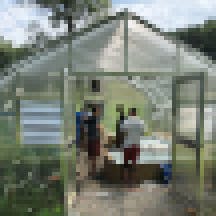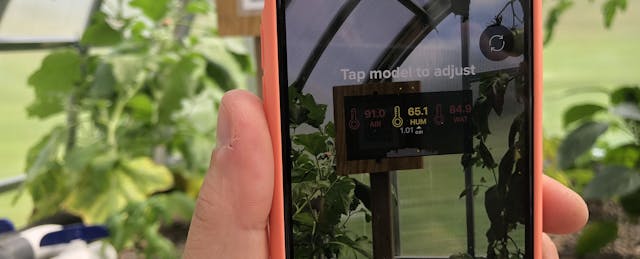It’s not every day that business students leave the classroom to work on a farm—particularly one that relies on the symbiotic relationship between living fish and plants. But one course at the University of Connecticut is testing the waters.
The course is meant to give students a deep dive into data-gathering and analysis, and it’s offered as a special topics course in the university’s major for Management Information Systems, which draws on both business and technology courses. Students travel about five miles from their Mansfield, Conn. campus to get to the farm, where they collect data about the aquaponics system and share their findings with a separate group of students who live on the farm.
The aquaponics and business experiment is a service-learning course, meaning the work students are doing is intended to tie back to the community. In this case, the farm forms that link. To craft the curriculum, Jon Moore, an instructor at University of Connecticut’s School of Business, reached out to the farm to ask what the course could do to help its existing work. In other words, Moore says, “What is the business problem and how can tech help solve it?”
The answer they fell on was collecting more data to understand the health of the ecosystem, and better allow the facility to grow fish to be eaten on campus or sold at local farmers markets.
The course leaders helped deck out the facility with sensors that track dissolved oxygen, water temperature, pH levels and electricity usage. QR codes are placed on the sensors, so students can scan each sensor with a mobile device or tablet and see an augmented reality dashboard with the most recent data. The team even 3D printed an automatic fish feeder to show how much food is left and how much has entered the tank (Moore says that has yet to be deployed, however).
Data from the sensors is sent to dashboards, which students, over the course of the semester, will analyze to figure out new ways to provide the facility with a digital system to monitor the farm.
Much of the technology, including the dashboards, which run using a tool called Splunk, was prepared for the students at the start of the semester. But in the second half of the course, students will attempt to replicate the data-gathering process—sensors, AR dashboards and all—in a different environment. “Their final project is deploying these into another greenhouse and converting that data to make sense,” says Moore.
“The class is very high level, but the biggest deep dive they are doing is the Splunk fundamentals training,” Moore explains. “They get background into how to use the sensors and the Splunk database and how to create visuals” with the data.

Moore is one of the brainchildren behind the aquaponics course. About two years ago, he began noticing a need to rethink recruitment efforts to the Management Information Systems major. “Students seemed to have a fear of tech going into it,” he says.
He also noticed the department had an empty lab, so he went to work turning the space into a hub that aims to introduce students to emerging technology. That space, now known as the OPIM Innovate Lab, is where students in the aquaponics course crunch the data they will collect over the semester. It also hosts workshops on everything from virtual reality, to 3D printing, to data analysis and spreadsheets.
To some degree, the aquaponics course itself was born out of one of those workshops, Moore says. “Last spring, I asked an adjunct faculty to do a workshop on Internet of Things. It was one of the most popular ones of the semester, the room was packed.”
He had an idea to expand the workshop into a special topics course, and asked his colleague Ryan O’Connor, who also teaches the course, to help develop it.
“I had no idea what aquaponics was before the class, so learning how we would use tech to augment the science behind aquaponics itself, that whole concept was bizarre and cool,” says Radhika Kanaskar a senior at the University of Connecticut who is majoring in MIS. “It’s really unique to be able to get off campus and go onto a farm to seeing all these things I've learned over the years be applied.”
Moore is not sure what the course might look like after this fall. “In the winter a lot of the plants on the farm go dormant, so it's hard to build a class around that,” he points out.
But, he says, the team intends to keep the tech running and available for those working at the facility after the students complete the course. “I do a lot of thesis advising and maybe they can use the farm as a place to work on that,” he hopes. “I think a number of students will want to continue this and do independent studies.”


